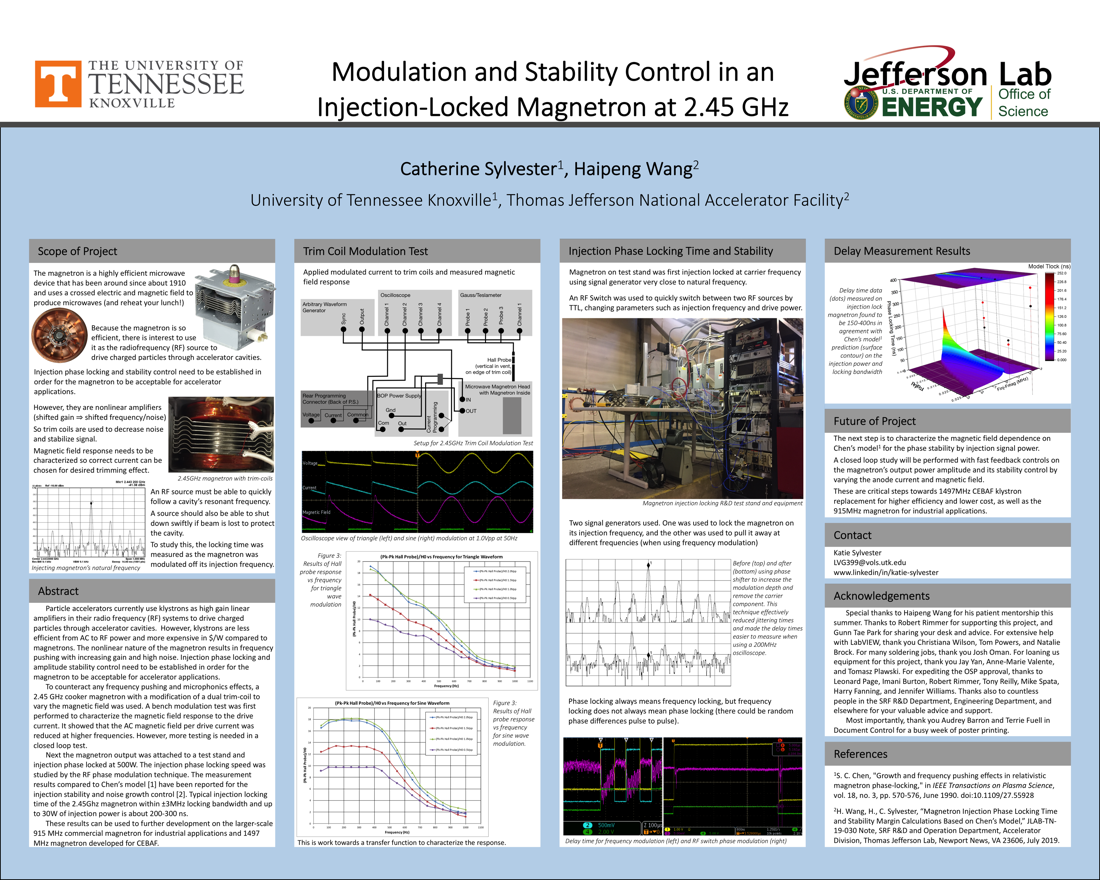Undergraduate Research at Jefferson Lab
Modulation and Stability Control in an Injection-Locked Magnetron at 2.45 GHz
Student: Catherine Sylvester
School: University of Tennessee, Knoxville
Mentored By: Haipeng Wang
Particle accelerators currently use klystrons as high gain linear amplifiers in their radio frequency (RF) systems to drive charged particles through accelerator cavities. However, klystrons are less efficient from AC to RF power and more expensive in $/W compared to magnetrons. The nonlinear nature of the magnetron results in frequency pushing with increasing gain and high noise. Injection phase locking and amplitude stability control need to be established in order for the magnetron to be acceptable for accelerator applications. A 2.45 GHz cooker magnetron with a dual trim-coil was used. A bench modulation test was performed to characterize the trim coil magnetic field response to the drive current. It showed that the AC magnetic field per drive current was reduced at higher frequencies. However, more testing is needed in a closed loop test. The magnetron output was next injection phase locked at 500W. The injection phase locking speed was studied by the RF phase modulation technique. The measurement results compared to Chen's model have been reported for the injection stability and noise growth control. Typical injection locking time of the 2.45 Ghz magnetron within ±3 MHz locking bandwidth and up to 30W of injection power is 150 - 400 ns. These results can be used to further development on the larger-scale 915 MHz commercial magnetron for industrial applications and 1497 MHz magnetron developed for CEBAF.

Citation and linking information
For questions about this page, please contact Education Web Administrator.
